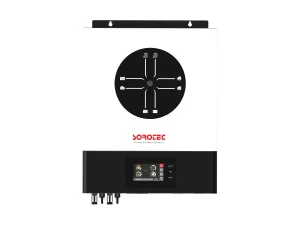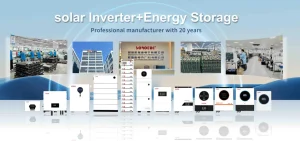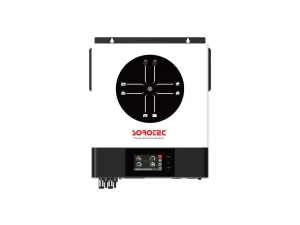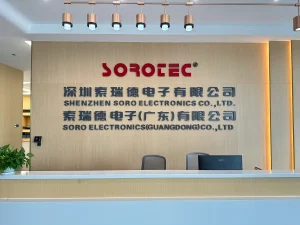Modern applications make use of UPS (Uninterruptible Power Supply) systems that manage power usage and serve as a consistent source of energy for powering critical equipment uninterruptedly and efficiently. These systems are built to help keep output and efficiency high even while minimizing energy consumption.

The Role of UPS Systems in Power Optimization
Importance of Power Management in Modern Applications
Power management is one of the key aspects of most modern applications of technology, providing a seamless experience and helping to avoid waste of power. Data centers, healthcare facilities, and industrial environments all require stable, clean power. Power supply systems contribute greatly to the balance of this equation by supporting electricity availability in the event of outages as well as maintaining efficiency in energy use during steady-state operation.
Power management is not just about avoiding downtime. A smart grid includes smart distribution, load balancing, and an efficient battery to create minimal waste. Recent migration to advanced UPS systems promotes adaptive technologies tailored to fluctuating loads affecting reliability and efficiency.
Key Features of UPS Systems That Contribute to Energy Efficiency
Today UPSs have features that make them use more energy-saving technology, ensuring that they keep doing a good job for a proper period. Its intelligent battery management system (BMS) also stands out due to accurate charge-discharge management, increasing both the performance and lifespan of the battery.
One such innovation is adaptive load-sharing, wherein the power is dynamically shared as per demand in real-time to save the energy base.
Strategies for Reducing Power Consumption Using UPS Systems
Adaptive Load Sharing and Balancing
By minimizing energy waste during customization, adaptive load sharing represents an innovative way of energy efficiency in UPSs. These systems use real-time load requirements to optimize power distribution across devices. That keeps from overloading one unit while leaving others underused.
For example, UPS models that are designed to operate in parallel can balance the load between several units. In setups like data centers or industrial plants where loads change continuously, this feature is really helpful.
Optimizing Battery Usage for Prolonged Efficiency
For minimizing power consumption, battery optimization for the time it takes to consume it is a key part. More sophisticated, three-stage charging techniques are used by advanced UPS systems to ensure that UPS uses the maximum health of the battery and does not waste the minimal energy available. In addition, peak-and-valley charging, etc., enables users to charge batteries in hours with low electricity prices.
Peak-and-valley functions that come integrated into the REVO HES, for example, will allow efficient battery charging schedules. These capabilities would go a long way in driving down operational costs, as well as enabling sustainable energy practices through seamless adherence to grid requirements.

Intelligent Monitoring and Control Mechanisms
Intelligent monitoring devices are a great way to improve the standard operating functioning of UPS systems. Such tools offer insights in real-time about the consumption of power and take proactive measures to reduce wastage.
You can also find WiFi-enabled remote monitoring options among many modern UPS units today, allowing for seamless and easy control.
Applications of Energy-Efficient UPS Systems in Various Industries
Data Centers and IT Infrastructure
UPS systems are increasingly crucial for data centers in 2020. Even small efficiencies can result in significant cost savings over time, especially as these areas have very large energy demands. These UPS solutions provide backup power with high reliability, while their load management features run at high efficiency, ensuring a low operating cost.
Products like the REVO VM II PRO, with its support for lithium battery communication and grid-connected functionality, are tailored for such demanding environments.
Industrial Automation and Manufacturing Processes
In industrial automation settings, a consistent power supply is critical for maintaining production continuity. Energy-efficient UPS systems not only prevent downtime but also enhance overall system reliability through adaptive technologies.
For instance, solutions that offer dual-output intelligent load management are particularly beneficial in these environments. They ensure optimal resource allocation while safeguarding sensitive machinery from potential damage due to power fluctuations.
Healthcare Facilities and Critical Operations
Healthcare facilities operate in a life-critical environment; therefore, an unwavering commitment to reliable power supply is vital. This is where energy-efficient UPS systems come in, making sure that outages do not affect transition and efficiency.
Systems like those featuring integrated designs with IP65 protection grades are particularly suited for such applications. These solutions combine durability with advanced functionality to meet stringent healthcare standards effectively.
SOROTEC’s Contribution to Power Optimization with UPS Systems
SOROTEC’s High-Efficiency UPS Models
High-efficiency UPS systems are critical enablers of energy optimization and ensure reliability alongside sustainability. These systems ensure a reliable power supply while minimizing energy wastage, which makes them essential for data centers, healthcare centers and industrial applications of all kinds.
For instance, the REVO HMT from SOROTEC provides dual-output intelligent load management and has embedded RS485 and CAN ports for lithium battery communication. This guarantees that energy is effectively distributed, whilst also keeping operational flexibility. In addition, some models can work without a battery, which reduces idle power loss and makes them more efficient.
Integration of Renewable Energy with SOROTEC UPS Systems
Incorporating renewable energy resources such as solar power into UPS systems is a notable development in sustainable energy practices. UPS’s modern features can quickly connect with the system of RE energy.
The REVO VM IV PRO-T, for example, provides the ability to connect to the grid, and depending on configurations, it runs in a battery-off mode. This feature makes it perfect for places that want to save carbon emissions without compromising on power delivery.
Aside from that, some products such as the MPPT SCC use intelligent maximum power point tracking technology.
Future Trends in Energy-Efficient UPS Technology
Innovations in Battery Technologies for Better Performance
As battery technology keeps advancing, UPS systems also get more efficient and better. Lithium-ion batteries with longer cycle life, lighter weight and higher energy densities have come into common use.
In addition, several systems today utilize three-stage charging techniques that will help prolong battery life with lower energy consumption. Peak-and-valley charging functionality is also integrated so that users can schedule when to charge batteries during periods of off-peak electricity cost.
AI-Driven Predictive Maintenance for Enhanced Efficiency
Artificial intelligence is changing the way UPS systems are monitored and maintained. AI predictive maintenance tools track the operational data, analyzing it to determine the extent of issues and predict failures before they take place.
Such an approach helps reduce downtime, minimizes mitigation time, and takes care of performance optimization of the system in case any inefficiencies are detected. By fixing inefficiencies promptly, this proactive approach minimizes downtime and enhances the performance of the system.
As an example, many modern UPS devices include remote monitoring with WiFi capabilities that provide users with information about the trends in electricity consumption.
Expansion of Hybrid and Green Energy-Compatible UPS Solutions
The rise of hybrid systems mixes classic grid power and renewable energy sources. They provide extreme flexibility, using whatever source of power is most convenient and inexpensive.
FAQs
Q1: Why are high-efficiency UPS systems necessary to accommodate modern applications?
A: High-efficiency UPSs use adaptive load management and smart optimization capabilities to reduce energy losses without affecting the uptime during outages.
Q2: How does modern-day UPS connect to renewable energy sources?
A: Most of the more sophisticated models come with a grid-connected function and features such as MPPT to make effective connections with solar panels for sustainable energy practices.
Q3: How does AI contribute to predictive maintenance in terms of tools for real-time management?
A: AI drive predictive maintenance detects the problem before it happens, reducing system downtime and improving entire system efficiency through real-time monitoring tools








